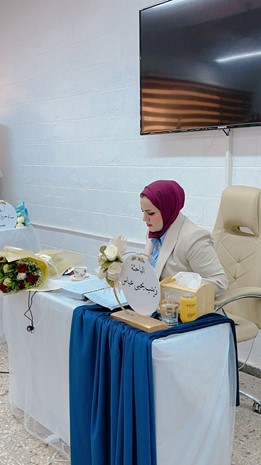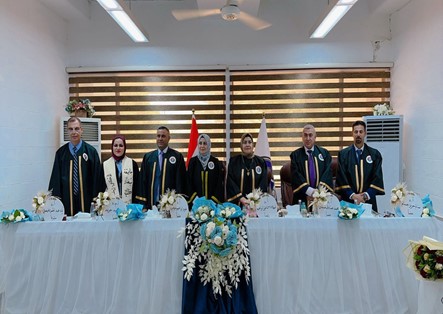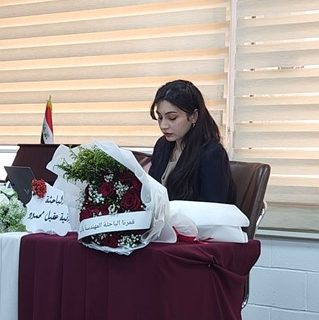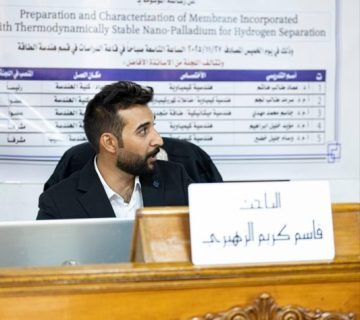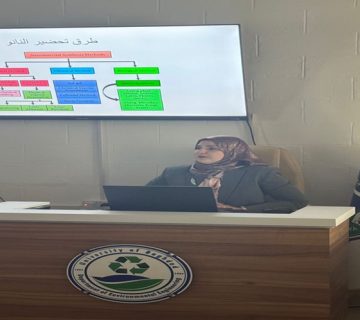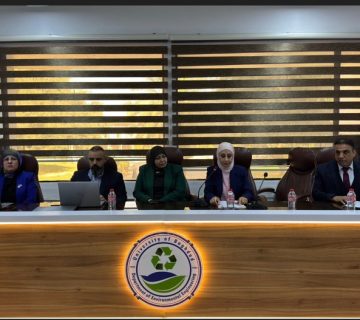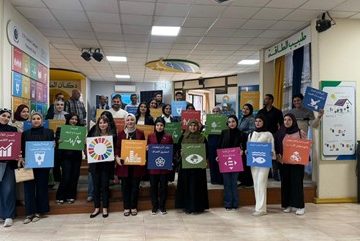Environmental Engineering Department at the College of Engineering, University of Baghdad, held PhD dissertation examination titled:
“Removal of Tetracycline and Lead ions from contaminated ground water using Mg/Fe-LDH-Na alginate beads in Funnel and gate configuration”
By the student Zainab Yahya Abbas and supervised Prof.Dr. Ayad Abdul-Hamza Faisal on Thursday 22/5/2025, in the Environmental Engineering discussion hall. The examination committee consisted of Prof.Dr. Shahlaa Ismail Ibrahim as Chairman, and the membership of Prof.Dr. Abeer Ibrahim Musa, Prof.Dr. Salim Hariz Jsam, Prof.Dr. Muhammed Sadiq Salman and Assist.Prof.Dr. Basim Hameed gremad. After conducting the public discussion and listening to the student’s defense, the dissertation was accepted. It was summarized as follows:
This study focuses on producing a nonconventional sorbent with the aid of Schanginia aegyptica and iron scrap solid wastes. Solutions extracted from Schanginia plant parts and iron scrap can be used effectively to obtain magnesium (Mg) and iron (Fe) ions respectively. Prepared sorbent named “magnesium / iron- layered double hydroxide- sodium alginate beads (Mg/Fe- LDH- Na alginate beads)” was applied to capture of tetracycline (TC) and lead (Pb) from the wastewater based on batch and continuous studies to simulate the permeable reactive barrier (PRB) technology. Mg and Fe were extracted from Schanginia and iron scrap, respectively, with optimal extraction conditions determined to be dosage 20 g/300 mL with 14% HCl for Schanginia and 4% HCl.
The beads were successfully synthesized using the precipitation method, with the optimal parameters for synthesis being a pH of 10, a molar ratio (Mg/Fe) of 3, and a nanoparticle dosage of 5 g. Characterization results indicated that the formed nanoparticles, particularly MgFe layered double hydroxide, enhanced sorption efficiency. The best conditions for adsorption included 120 minutes of contact time, 5 mg/L initial concentration, 200 rpm agitation speed, and 1 g/50 mL adsorbent dosage, achieving maximum removal efficiencies of 93.9% for TC and 96.7% for Pb. Sorption data fitted well with Langmuir isotherm model, indicating a mono-molecular layer adsorption, with a maximum adsorption capacity of 1.542 mg/g for TC and 1.85 mg/g for Pb. Leaching kinetics revealed that the contaminants concentrations in the washing solution remained low after desorption, confirming the sorbent’s stability. Reusability tests demonstrated the beads retained high concentration of contaminants even after multiple cycles, with a decrease in efficiency from 91.9 to 86.8% for TC and 95.9 to 84.7% for Pb. The pseudo-second-order model confirmed that chemical forces (chemisorption) were the primary mechanism of sorption.
Finally, the PRB’s performance in limiting pollutant migration showed that lower water flowrates and inlet concentrations, combined with higher bed depths, extended the barrier’s effectiveness and longevity. The one- and two-dimensional spatial and temporal transport of TC and Pb under equilibrium conditions had to be studied using a numerical model. The distribution of these pollutants in the flow domain was also established using the finite element approach based on the computer solutions (COMSOL) Multiphysics 3.5a software. The experimental and expected outcomes demonstrated that the PRB can contribute to limiting the movement of the contaminated plume.
The recommendations of this dissertation:
- Future research could explore the potential of using the prepared sorbent for treating inorganic contaminants present in aqueous solutions and groundwater.
- New research projects could focus on utilizing various industrial waste alternatives, such as waterworks sludge, and plaster kiln dust, as reactive materials or in the preparation of new sorbents for PRBs.
- Additional studies could examine the migration of inorganic and organic contaminants in three-dimensional beds, utilizing analytical methods and finite difference numerical solutions for the advection-dispersion equation.

